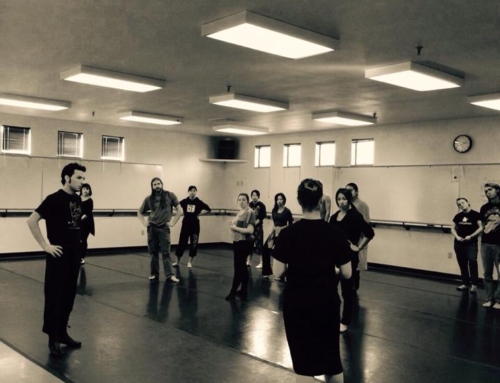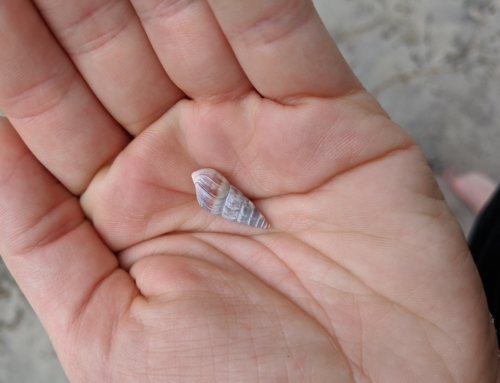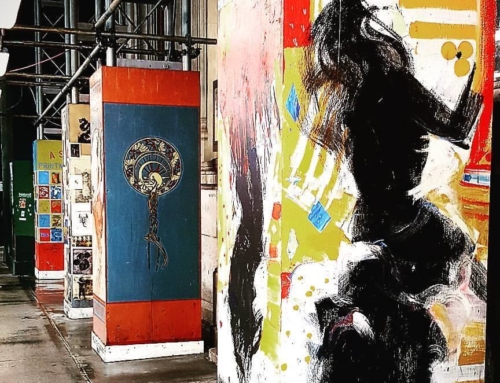As many of you know, I perform at a lot of school-shows and lecture-demonstration performances. And one question that constantly comes up is whether we do other types of dance or just flamenco. For quite a while, I identified myself solely as a flamenco dancer–that is what I focus mainly on and what I do professionally. But as I’ve come to appreciate my training in other forms of dance, I think of myself more as a dancer and not just a flamenco dancer. Granted, flamenco is my specialty and area of expertise, but dance is dance; yes, I specialize in a certain genre, but movement to music is the core of what I do and that goes for any dance form.
 |
| A photo from a recent performance at a school show in NYC. One of the students asked if the dancers did other types of dance. |
I take contemporary dance classes on a regular basis in New York, which have greatly helped my alignment and quality of movement, which carries over into my flamenco dancing. The different gestures, lines, and approaches to choreography in contemporary dance also inspire my work in flamenco. So although I have never worked professionally as a “contemporary” dancer, that training feeds my flamenco and makes me a more versatile dancer within flamenco.
I’m also particularly thankful to my intensive training in ballet. The more I progress in the professional dance world, the more I appreciate the discipline, structure, and movement quality all those years in a leotard and tights gave me. The correct way to do any movement in ballet is clear–there is no modifying the movement for different body types, there aren’t a million variations of a position. There is one first position, one second position, etc. In that way, ballet teaches a dancer to have an eye to look at the teacher and make that same movement or shape on their own body.
| Here is a photo of one of my ballet heroes growing up, and a dancer I still very much admire, Paloma Herrera. |
The strictness and discipline required by ballet is something I constantly am thankful for. Unlike creative movement classes that many young children take, a good ballet instructor teaches the etiquette that goes hand in hand with ballet. Things like not yawning while in class, or not looking at the clock to see if class is almost over, and thanking the teacher at the end of the class.
Ballet also teaches structure in the setup of the class–class always begins at the barre, first with pliés, followed by tendus, degagés, etc. Then the center exercises and finally the jumps and exercises traveling across the floor. Even the vocabulary is standardized. No matter what country or who the teacher is, the vocabulary remains the same.
I was reminded yet again of how thankful I am of ballet during a recent residency with two artists from Spain (more on that in the next post!). We did many exercises that travelled across the floor that focused on placement and technique. Only with one other teacher in the U.S. have I done that type of exercise. The combinations were flamenco, but also had a strong influence from Spanish classical and ballet. In the U.S., because many students want to learn choreographies, the technique exercises that require repetition and a great deal of focus are often lost or thought to be boring. Yet, they form the foundation of spatial awareness, something that is critical to working in a professional company. Knowing how to keep the flow going and how to space oneself in these exercises carries over into how to place oneself and how to travel a movement on stage.
To give you an idea of some of the types of exercises, here is a clip from Bodas de Sangre and Carmen by Carlos Saura, with Antonio Gades teaching a flamenco class.
Notice in this first video how the dancers stay perfectly in a line as they fly back and forth across the floor. Although this was surely rehearsed for the film, this gives an idea of how a class should look.









Leave A Comment